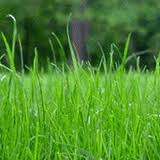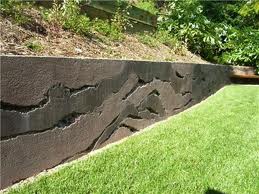
 We’ve all heard the expression “the grass is always greener”, but what happens when it turns brown? Or becomes infested with crab grass, or fungus or weeds? Here are some helpful tips to keep your lawn looking green and healthy this coming summer.
We’ve all heard the expression “the grass is always greener”, but what happens when it turns brown? Or becomes infested with crab grass, or fungus or weeds? Here are some helpful tips to keep your lawn looking green and healthy this coming summer.
• Watering – Mother nature doesn’t always provide the right amount of precipitation, especially in southern California. To keep your lawn looking healthy and encourage root growth provide enough water to fill a rain gauge with ¾ to one inch of water every 4-6 days in summer. This amount of water penetrates deep into the ground and encourages the roots to grow down into the soil, helping the grass weather drought and hotter temperatures. It’s also important to water in the morning before increased air currents and hotter temperatures lead to increased evaporation. Frequent, fast watering causes the grass to retain only surface moisture, leading to uneven growth and brown spots as the less saturated areas become dried out in the long summer months. You may also consider installing a rain barrel in your yard to collect run off from your roof. You can use the water in the barrel to irrigate flower beds or areas of your lawn that may not get enough water from your sprinklers. To get your free rainbarrel in Culver City visit www.culvercity.org/en/Articles/RainBarrelProgram
• Fertilizing – Grass needs to eat too. In our modern neighborhoods a lack of detritus and naturally occurring compost can cause soil to become depleted in the essential elements grass needs to grow thick, strong and healthy. Fertilizer can either be applied once a year during the peak growing season, or up to four times a year for the lushest growth. Fertilizer should be applied sparingly and immediately watered to move the nutrients into the soil and down to the root system. Watering also stops it sitting on the grass blades and causing fertilizer burn (brown dead spots caused by too much fertilizer). Be sure to read the label on the brand and choose an appropriate fertilizer for your grass. Warm season grasses such as Bermuda, St. Augustine and Zoysia grass need fertilizer in spring or summer. Cool season grasses like Fescue, Kentucky Bluegrass or perennial Ryegrass are better fertilized in both early spring and late fall. For a great home-grown fertilizer for plant beds, save the grass clippings when you mow and combine them with food scraps and other yard waste to produce your own compost. Compost bins can be purchased from the local hardware store or nursery.
• Weed Control – Weeds are generally a nuisance and can be defined as plants that grow where they are not supposed to. Generally weeds are native-type plants that do well in the natural conditions of the climate. Ironically, the best solution to eradicating weeds in the grass is to have a healthy lawn! A thick healthy lawn doesn’t provide the room or conditions conducive to weed growth. Homeowners can add to their weed problem by under, or overwatering their yards, not providing enough sunlight (i.e. not trimming back overgorwn trees) or mowing the lawn too low. If you only have a few weeds, pull them by hand making sure you get all runners and root systems. In the spring, apply a pre-emergence weed killer to stop plants like crabgrass, but for clovers or dandelions you will have to use a weed-n-feed fertilizer or a herbicide for growing plants once you see them in the yard.
• Mowing – A big mistake a lot of homeowners make is cutting the lawn too short. Grass is a living plant and cutting the blades reduces the amount of energy the plant produces, as well as injuring it. Cutting any more than a third off the blade of grass can damage the plant and reduce its ability to withstand stresses such as inadequate water or nutrients, weeds or pests. Lawnmower blades should be sharp and even, cutting the grass blades cleanly instead of ripping or shredding the stems, injuring the plant further. Also, set up a regular mowing schedule. Grass that is cut weekly during the growing season with a higher lawnmower blade setting will be much healthier than one cut down to the soil level every 2-3 weeks.
Lawns and gardens add greatly to the curb appeal and value of any home. To see how they affect your property, or for a free personalized market analysis, feel free to call or text direct to 310-259-7419 or visit www.heartrealtors.com and drop me an email at [email protected]. You can also Like us on Facebook at HeartRealtors.





Be the first to comment